How to Travel for Less
We travel a lot with our kids – 15 countries or so most years. We couldn’t do it if we were paying full prices for everything, or getting gouged by avoidable fees. These are the top 10 things I do to travel for less, and while booking travel, to make our Dollars/Euros/Rupees/Yuan stretch as far as possible.
1. Use T-Mobile
T-Mobile has typically never had the strongest rates in the US. Internationally, though, they’re great. Through their T-Mobile ONE and Simple Choice plans, you automatically get free data/email in almost every country in the world, and calls are only $0.25/minute. A few years ago in India, I put my phone on silent mode instead of turning it off one night, and someone called me 10 times trying to reach me. I didn’t answer, but the way the billing works, I was still charged $4.49 for each call attempt (billed at 1 minute). That no longer happens – now India is part of the T-Mobile plan, with calls being 95% less expensive. And I’m smarter about turning off my phone – or at least the cellular part of it – when I sleep.
I know a lot of people who use unlocked phones and simply get new SIM cards to try and travel for less when they go to new countries. That can work better some places and can be even less expensive than T-Mobile, but we move around a lot and I don’t want to have to think about doing that in every country. I like the simplicity of the T-Mobile plans.
2. Choose the Right Credit Card
A lot of cards charge a 3% foreign transaction fee on every charge, so look for a card that doesn’t. Several cards from Capital One and Chase don’t have any fees. The same is true for cards issued by most credit unions. HSBC, American Express, Citi, Barclay, and Bank of America all waive foreign transaction fees for select cards. If you’re not sure whether your card charges you the extra 3%, just call them and ask – preferably several weeks before a trip, so that you have time to get a new card and focus on your goal to travel for less.
3. Use ATMs to Get Cash
But do it right. Make sure that you know your bank’s ATM fee schedule since some banks charge several dollars every time you use a foreign ATM. If you’re with a large international bank like HSBC, using their ATMs in other countries can also help you travel for less. Or your local bank may waive ATM fees. Mine does.
If you’re not sure what fees you’re paying, be sure not to frequently withdraw small amounts of currency. Both the bank operating the ATM and your bank at home could be charging flat fees for every withdrawal. If you’re taking out $200, $5 in fees isn’t a big deal (although mostly avoidable if you plan ahead). If you’re taking out only $20 every time, $5 in fees is a huge surcharge proportionally, and that same $200, over the course of 10 withdrawals, will cost you $50 in fees.
And if the ATM asks you if you want your transaction sent to your bank in the local currency or in your home currency, ALWAYS CHOOSE THE LOCAL CURRENCY. It’s another trick of unscrupulous ATMs – if they convert the transaction to your home currency they’ll give you a much worse fx rate than your bank will. It’s the same thing I mention in point four below.
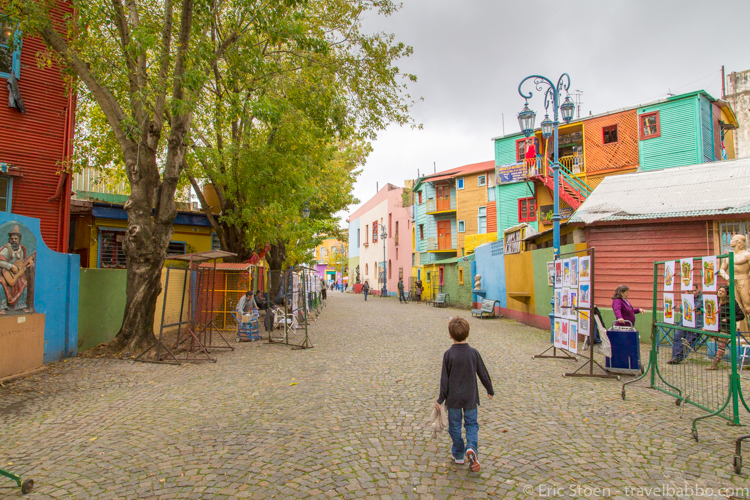
Also, try not to change money at zero-commission foreign exchange booths at airports or urban areas. Sure you’re avoiding commissions, but you’re also getting an exchange rate that could be 10% worse than the actual rate. And it never hurts to notify your bank of your travel plans. You don’t want to be 10 time zones away from home and suddenly find that you have a fraud alert on your account that’s preventing you from accessing your funds.
4. Always Pay in Local Currency
When you’re in a store paying with a credit card, you’ll frequently get asked whether you want the charge to go through to your card in dollars or in the local currency. Always choose the local currency to make travel more affordable. If you choose dollars, you have no control over the exchange rate, and you’ll likely pay 2-3% more than you would have if your credit card had done the conversion.
This is true for PayPal as well. Earlier this year I needed to pay for several foreign tours, and they all requested payment via PayPal. In each case I let PayPal do the initial conversion and give me the dollar equivalent, but then I declined that rate and told PayPal to charge me in Euros instead. I checked my credit card statement and did the math. If I had gone with PayPal’s dollar rates, I would have paid an average of 2.1% more.
5. Play the Mileage Game
This is getting harder all the time, as airlines are devaluing frequent flyer miles, but it’s still worth doing. Get a credit card that gives you miles on your preferred airline with every purchase. I highly recommend reading some of the threads at FlyerTalk to see what others are doing to maximize both their mileage accrual and awards. Personally, I make sure to charge everything possible to mileage-earning credit cards throughout the year to save more for travel, and I adjust my card use depending on which card gives me the most miles for specific transactions. One of my cards gives double miles for groceries, home improvement, and gas/petrol purchases. Another gives double miles for restaurants and travel. It all adds up. And look for special promotions where you can earn bonus miles.
And I also still pursue airline status, since the higher your status, the more miles you get from travel, and the fewer fees you pay to book and change travel. United’s making it harder and harder for me to maintain my 1K status, but I’m still fighting to get there every year. What that status means to me next year: no fees for booking, changing or canceling mileage tickets; access to more free tickets using the lowest amount of frequent flier miles; and more miles – 11 miles earned for every dollar spent on UA travel.
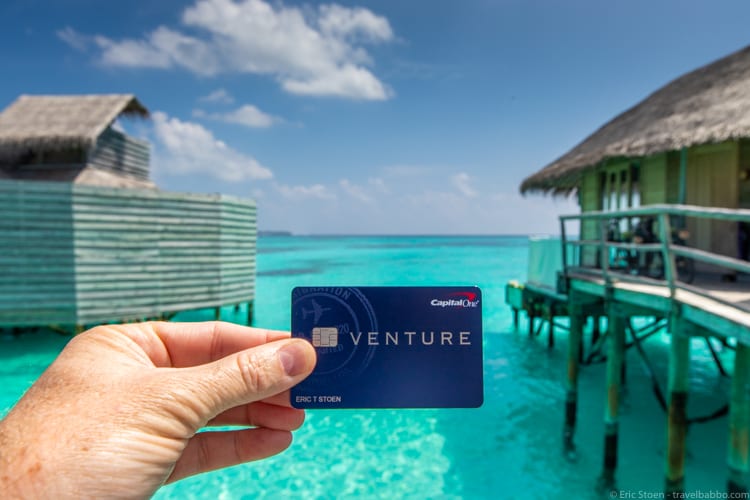
And what do I use all of the frequent flyer miles for? Basically, any travel where the value of the mile is $0.01 or higher. So if there’s a $500 ticket that I can get for 25,000 miles (giving each mile a value of $0.02), I go for it. We fly to Hawaii every year, and we use miles for free tickets every time. Tickets are generally $1,000 or so each when we want to go, but only 45,000 miles each.
6. Book Early, but Check Prices Constantly
This doesn’t necessarily work for airline tickets since the change fees are usually more than the potential savings, but it works for hotels and rental cars. I have weekly reminders on my computer to re-check the rates for travel that I’ve already booked. If a hotel reduces its rates for the nights when we’ll be there, I rebook. Same with rental cars. I do this up until the day we leave for vacation since you never know when rates are going to come down. Just always be aware of the cancellation terms in your booking.
7. Buy Plane Tickets at the Right Time
Cheapair.com determined that the prime booking window was one month to 3 1/2 months prior to departure. I personally use kayak.com and always check their guesses as to whether fares are going to increase or decrease (as seen in the chart in the upper left of the screen after you search for a fare). Wendy Perrin also has some good tips on her website to travel for less – namely don’t book too early, fly through unusual connecting cities and try separating your family into different reservations to see if two seats may be cheaper than the others (airlines work that way).
8. Think Apartments
I mentioned hotels above, but we also sometimes book apartments. With three kids we usually require two hotel rooms. Apartments can be less expensive than hotels – especially two rooms – and they let us be in the exact areas where we want to stay. In Paris, we love the 7th Arrondissement. Specifically, we want to be within a couple blocks of the markets of Rue Cler, a metro stop, and the Champs du Mars park at the Eiffel Tower. There are numerous apartments that perfectly fit those requirements, but very few hotels.
A note: please do not use vacation rental sites for smaller towns like Florence or Venice. When people rent out their apartments, they’re hurting their cities since they’re taking away places where locals could live. Eventually locals can’t afford to live there anymore. Plus we gain so much by talking with front desk staff at boutique hotels. The more we travel, the more we see the negative ramifications of Airbnb and other rental sites.
9. Have A Lot of Picnics
Eating out can be expensive when you’re trying to travel for less, it’s difficult with young kids in some places where meals tend to stretch to two or three hours, and if you don’t love the food, that’s a lot of time and money to invest only to be disappointed. From Santiago to Bruges to Florence to Paris, we love getting food from bakeries, produce stands, grocery stores and take-out places (not fast food!), and finding parks for picnics. The kids can run and play, we can relax, and we can leave whenever we want. As noted in my post for Wendy Perrin on 10 Tips for a Perfect Family Vacation in Paris, we always bring a thin linen blanket to use as a picnic blanket, and we try to bring reusable (but light) plates, cutlery, and cups from home as well.
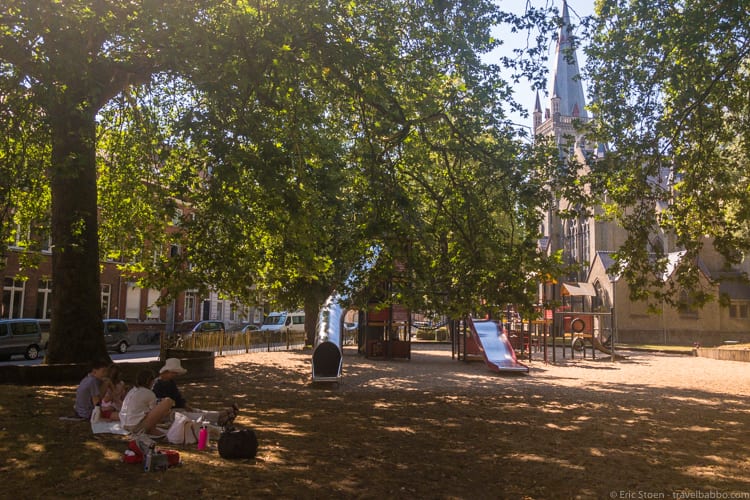
And if you’re staying in an apartment (see tip 8), you’ll be able to prepare your own meals and further avoid restaurant dining – as much or as little as you want to.
10. Travel When Others Aren’t
This is almost a cliché at this point, but it bears repeating: travel during off-peak times. That can apply to the days of the week when you’re traveling, but it primarily has to do with peak travel seasons. For spring break, think Venice instead of Hawaii. Go to Greece, or most of Europe for that matter, in May or September instead of during the summer. Obviously, school breaks dictate a lot of travel times, but there are ways to work around those. If your school gets out the first week of June, immediately head to Europe – you’ll get there before a lot of other tourists, and before the peak summer prices kick in. And although my wife hates that I think like this, consider taking your kids out of school for a week to travel for less. Travel is the best education. If there’s an off-season deal to the Galapagos, and it doesn’t coincide with any school breaks, go anyway! You can get to and see a lot of places if you fly out after school on Friday and come back 10 days later on Sunday evening.
Also, be aware of school calendars in other countries. For example, if you’re looking at Bali, don’t go during the Australian school holidays (early April, late June, and late September).
I’d love your thoughts too. What ways have you found to save money while seeing the world?
Pin It
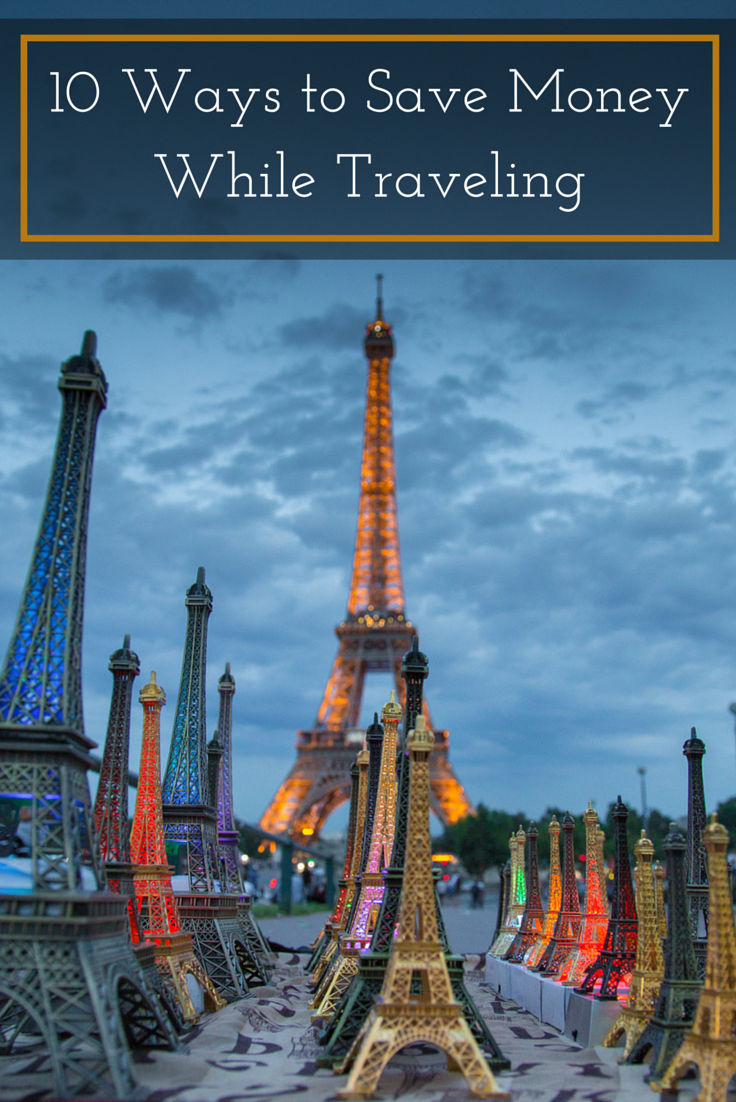


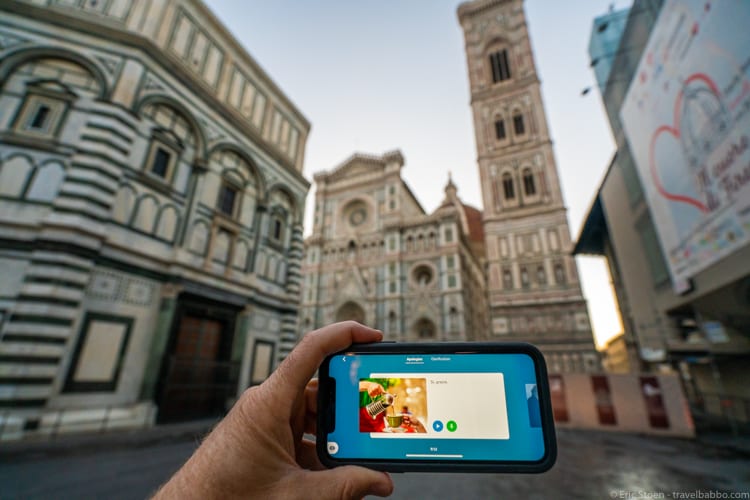
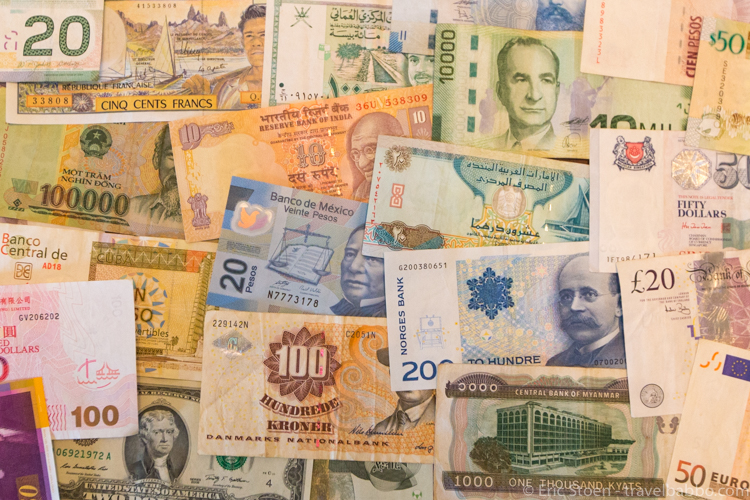

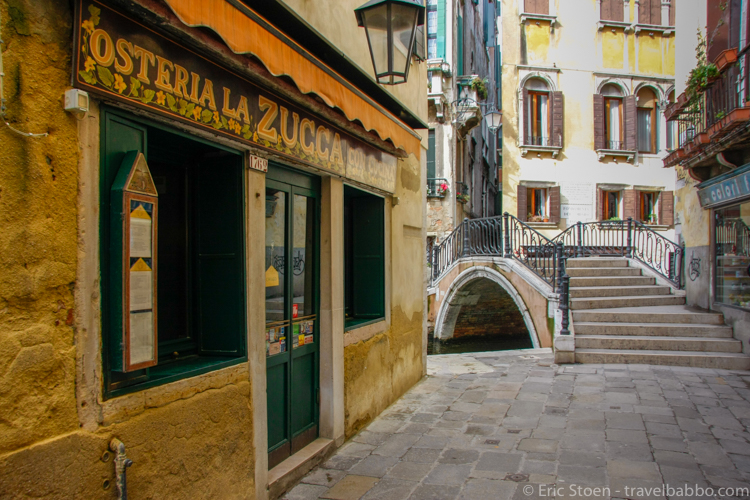






These are some great tips! I need to look into some of these credit card companies and maybe a new bank too that doesn’t charge those ATM fees! I’ll be pinning this post to keep it in mind.
Good overall round up of tips – travel hacking and foreign fee-less cards are the way to go!
I use Kayak too, oh and Skyscanner. Definitely agree on travel during off-peak times is one of the best ways to save money when travelling.
Good list! I still did not really get to the credit card and the fees since I have none (my husband has his although) – I know, how ridicules! But now the more I read about the perks of having one, I am trying to find the one which would suite me the best when traveling. With exchanging money when abroad I found out that in Cyprus Banks are the once who take commission and small stores in Pafos offered better rate and no commission whatsoever! So it is worth checking this before you traveling 🙂
Have you used AutoSlash? They monitor your car rental booking for you and email you if they find a cheaper price. I’ve saved quite a bit by using them as they can often beat the AAA discount and it’s very little work for the user.
Thanks Rachel! I’ll check it out.
Love this! Would also say choose flights carefully on kayak – as the cheapest ones might mean multiple long layovers which will end up costing you a fair bit of money and energy as well!
Absolutely Ellie. I mentioned that in my Flying with Kids post. On Kayak I sort by Duration and then look at fares from there. Shorter overall trips, fewer connections and no red-eyes are worth a little extra to me.
Thanks Eric. Very useful tips.
Going to check Tmobile n the convo threads on flyer talk.
Great tips – especially the one on having a picnic! A lot of people dismiss the cost savings of grabbing a few things at the market, and they completely miss the simple joy of having a picnic! But…what really inspired us to comment, is that picture of the Eiffel Tower from le Trocadero. Gorgeous shot!! 🙂
Thank you! And yes, can’t wait to be back in Europe having picnics again.